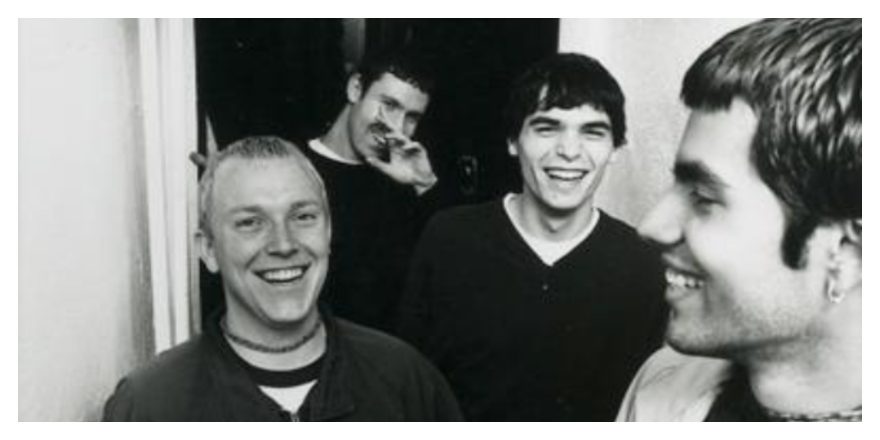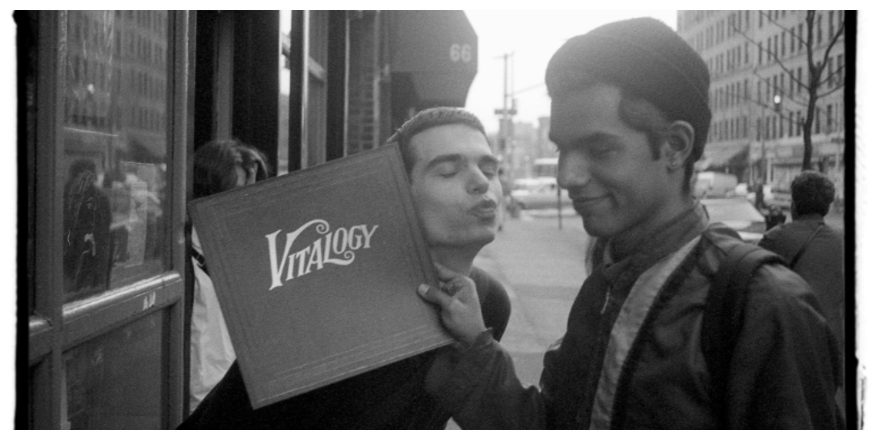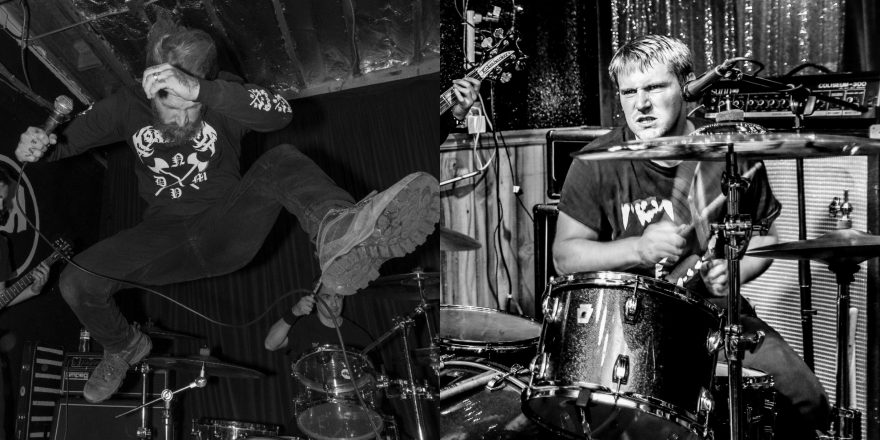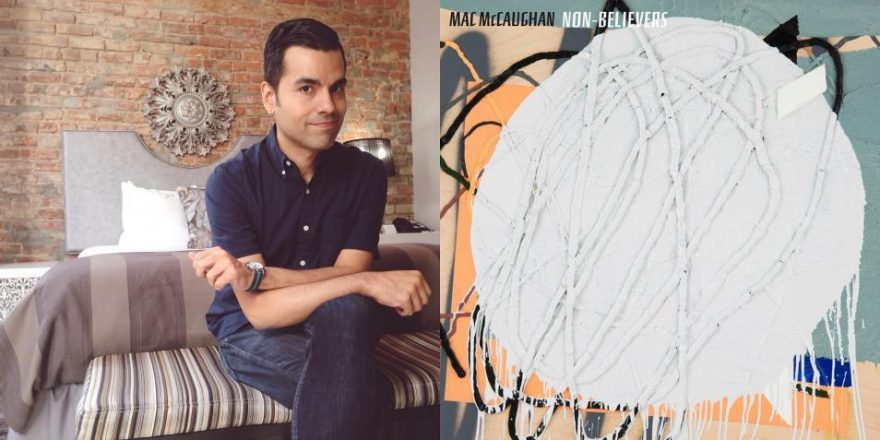Hardcore culture didn’t exactly splinter with the end of the 1980s as much as it developed multiple personalities. From 1990 to 1993, the scene changed so rapidly (and radically) it would have been impossible for an outsider to trace the connective tissue between all of hardcore’s newly competing musical styles, ideologies, and aesthetics. There was traditional hardcore, melodic hardcore, grindcore, metalcore, moshcore, pop punk, post-punk, and post-hardcore. There were straightedge kids, peace punks, skinheads, Hare Krishnas, hardline far-right vegans, hardcore left-wing anarchists, violent street gangs, and do-gooder suburbanites. There were shaved heads, bleached hair, long hair, baggy pants, tight jeans, canvas sneakers, combat boots, gas station jackets, and sportswear. (By the end of the ‘90s, there would even be a Norwegian straightedge band called Sportswear.) We literally had everything. But for most of us, these were mild, natural variations — seemingly disparate threads that still somehow merged into the fabric of one socially legible community.
Of course, that isn’t to say there weren’t any clashes.
Anti-religion protests at Shelter shows began in the parking lot of their first show at the Anthrax in Connecticut in 1990 and had yet to subside by the time I joined the controversial Hare Krishna band in 1992. A well intentioned, but dreadfully awkward radio debate between Born Against and Sick of it All on WNYU’s Crucial Chaos attempted to “solve” the problem of corporate record company interest in hardcore. In a more deliberately comedic act of aggression, the vegan straightedge band Earth Crisis was “attacked” on stage in New Jersey with projectile cartons of yogurt.
But no act of resistance was as consequential to the future of our scene as the announcement that Maximum Rock’n’Roll — a legendary fanzine and the closest thing we had to a centralized platform of communication—had decided to cease its open advertising practices in favor of a new policy that essentially made them the self-appointed arbiters of what was and wasn’t “punk.” The editors pledged that they would only run ads for artists and labels that reflected punk as they defined it, thereby cutting off the most important cord of communication that dozens of independent artists, labels, and zines had to reach the national and global punk scene at large.
This move has been widely forgotten over the years, but I cannot stress how major it was at the time. Before personal computers, Maximum Rock’n’Roll was our internet. We used it to meet people in other scenes, to shop for records and zines and t-shirts, to trade tapes, to book tours for our bands, and in some cases, even to find love. When MRR closed off its readership to all but the purest of traditional punks, it drew a line in the sand that forced the rest of us to take stock of what it was that we felt actually made us “punk” — and many of us realized that the rote adherence to a particular musical style or mode of dress had little to do with it. For those of us in exile, punk wasn’t about the color of your hair or the tempo of your song. It was about our community, our commitment to authenticity, and our shared values. We literally grew up singing songs called “It’s About Time That We Had a Change,” so it seemed crazy that people wanted us to feel bad for actually making things different.
There’s a reason the first major hardcore festival of the decade — in March of 1993 in Dayton, Ohio — was named “More Than Music.” The scene would continue to evolve, with or without MRR.
◊
In the middle of all this, I was still playing in Shelter — a hardcore band that also featured Ray Cappo and John Porcelly, one-half of the seminal straightedge band Youth of Today. Ray and Porcell were icons of the scene, as well as friends of mine, who brought me into the band and ultimately introduced me to the global hardcore community. As one of the biggest bands of the era, Shelter once spent four months traveling across the continental US alone; with them I’d also go on to play in Canada, Europe, Japan, and even Hawaii, all for the first time. Being in that band was an educational and transformative experience for me.
Even still, by the summer of 1993, I knew I needed to quit. Being a punk ambassador for the Hare Krishna movement wasn’t really what I wanted to do with my life, for one. But even more than that, I was honestly just kind of finished with playing “proper” hardcore music. These feelings were, in part, compelled by mainstream America’s newfound fixation on punk and the questions that came along with it: For example, if Eddie Vedder is on MTV diving off of stage monitors, why should we keep diving off of anything? And if Lollapalooza is already a hyper-masculine mosh pit fever dream, how hard could it be to invent a new way to show our love for the music? I appreciated hardcore history, deeply, but in the end, I wanted to write history — not relive it.
So when Maximum Rock’n’Roll decided to become the jury of punk judgment, I devised an exit strategy from Shelter that would not only serve the community I loved, but also fill a void: In September of 1993, after giving the band a six-month resignation notice, I wrote and printed 2,000 copies of a fanzine called Anti-Matter and dedicated its pages to the bands and labels I loved that MRR abandoned.
Within three months I sold every last copy, in addition to quickly developing a rather curious reputation for a hardcore fanzine: The word on the street was that Anti-Matter was where bands went to talk about their feelings.
◊
So here’s the thing: Punk rock — like any culture — is an ecosystem. Which is to say that if one thing evolves, that one thing does not simply evolve in a vacuum. It changes everything around it, slowly but surely, until it creates a body of changes that either expands or redefines the culture as a whole.
The hardcore scene was already moving towards a new era where introspective lyrics and personal politics were beginning to play a larger role. With Anti-Matter, I tried to take that sense of introspection and apply pressure to it. I asked Rob Fish from Ressurection to talk about losing his mother to Lupus. I got Zack de la Rocha from Rage Against the Machine to tell me, in detail, about the last time he cried. Anthony Roman from Garden Variety (and, later, Radio 4) told me about growing up in a family with a history of alcoholism. In any given issue, you’d read about suicide attempts, traumatic childhood abuse, HIV scares, and attempts at getting psychological help. As time went on, I realized that the guiding principle I used in most of the interviews was the same: It was my conviction then, as it is now, that we all keep most of the same secrets.
In two years of Anti-Matter, both the fanzine and the scene itself inched its way closer to a more unified theory of hardcore in the ‘90s — one that still had room for the angry and aggressive music we grew up on, while also making room for contemplation, sensitivity, and even melancholy. Everything you know about “emo” came from that moment.
That was also the moment when I decided to start a new band with three other kids I knew from the scene. We were punk enough to name ourselves after a non sequitur lyric from a Misfits song, but by the time we broke up in 1997, Texas is the Reason had gone on to become what Wikipedia now calls “one of the cornerstones of the ’90s emo movement.”
Needless to say, I was mortified.






